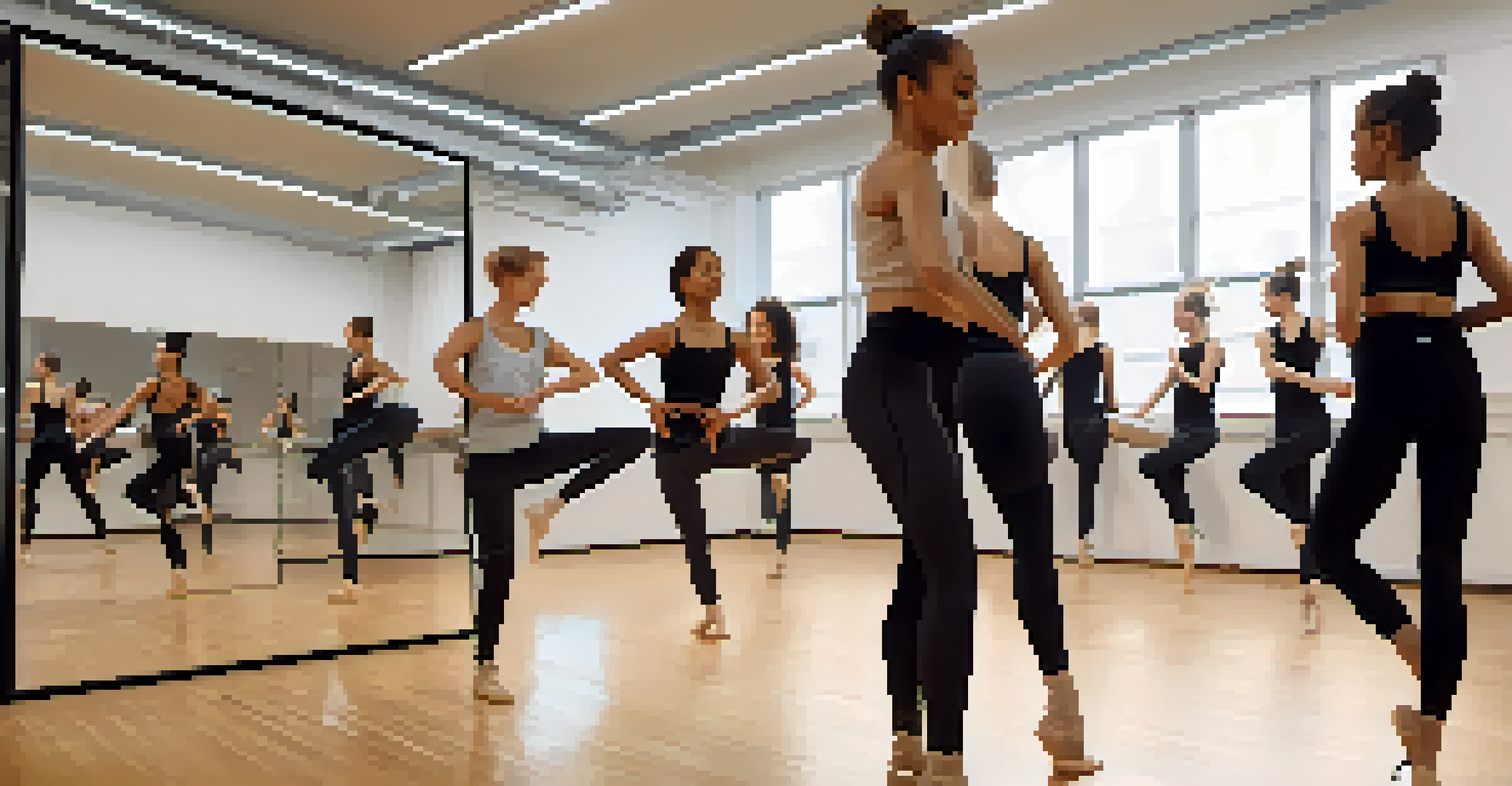Exploring Dance Analytics: Data-Driven Insights for Improvement

Understanding Dance Analytics and Its Importance
Dance analytics involves the collection and analysis of data related to dance movements, performances, and training regimens. By leveraging technology, dancers and choreographers can obtain actionable insights that can significantly enhance their artistry. This approach not only improves individual performance but also contributes to the evolution of dance as a whole.
Dance is the hidden language of the soul.
The importance of dance analytics can be likened to a coach analyzing game footage in sports. Just as athletes can refine their skills by studying their play, dancers can identify strengths and weaknesses through data analysis. This process enables them to focus their training on areas that yield the highest improvements.
Moreover, with the rise of wearable technology and sophisticated software, accessing and interpreting dance data has never been easier. This democratization of data allows dancers of all levels to benefit from insights that were once reserved for elite performers, fostering a culture of continuous improvement.
Key Metrics in Dance Analytics You Should Know
When diving into dance analytics, several key metrics can provide valuable insights. These include movement efficiency, speed, and rhythm accuracy, which help dancers evaluate their performance objectively. By measuring these aspects, dancers can track their progress over time and make informed decisions to enhance their practice.

For example, a dancer might analyze their footwork speed to determine how it impacts their overall performance. If the data indicates that their speed is below average, they can adjust their training regimen to incorporate more agility drills. This targeted focus can lead to significant improvements in their dance execution.
Dance Analytics Enhances Performance
By analyzing data from movements and training, dancers can identify strengths and weaknesses to improve their artistry.
Additionally, metrics like body alignment and posture can be tracked to prevent injuries and ensure optimal performance. By maintaining a keen eye on these elements, dancers can not only improve their artistry but also enhance their longevity in the field.
How Technology Is Transforming Dance Analytics
Technology plays a pivotal role in the realm of dance analytics, providing tools that enable dancers to gather precise data. From motion capture systems to wearable fitness trackers, these innovations allow for a granular analysis of movement patterns. This technological advancement has transformed how dancers approach their training and performances.
The only way to make sense out of change is to plunge into it, move with it, and join the dance.
For instance, motion capture technology can record a dancer's movements in 3D, allowing for a detailed breakdown of every step and gesture. This data can then be analyzed to identify areas for improvement or to refine choreography. As a result, dancers can achieve a level of precision and creativity that was previously unattainable.
Moreover, mobile apps dedicated to dance analytics are becoming increasingly popular. These apps help dancers log their training sessions, track progress, and even connect with coaches for personalized feedback. This accessibility ensures that dancers can harness the power of data-driven insights right at their fingertips.
Integrating Dance Analytics into Training Routines
To truly benefit from dance analytics, integrating it into regular training routines is essential. Dancers should start by setting specific goals and identifying relevant metrics to track. This focused approach allows them to tailor their training to meet their individual needs and aspirations.
For example, a dancer aiming to improve their flexibility might use analytics to monitor their range of motion over time. By consistently assessing their progress, they can adjust their stretches and conditioning exercises for maximum effectiveness. This targeted strategy not only enhances performance but also keeps dancers motivated.
Technology Transforms Dance Training
Innovations like motion capture and mobile apps provide dancers with precise data to refine their techniques and enhance creativity.
Additionally, sharing insights with coaches can foster a collaborative approach to training. By discussing data findings, dancers and coaches can work together to create personalized plans that leverage analytics for optimal results. This partnership can lead to breakthroughs in performance that might not have been possible without data-driven insights.
The Role of Dance Analytics in Performance Evaluation
Dance analytics is invaluable when it comes to performance evaluation. By analyzing data from rehearsals and live performances, dancers can gain insights into their stage presence, timing, and audience engagement. This objective feedback helps them understand how well they connect with their audience and where they can improve.
For example, a dancer might review data on audience reactions gathered through video analysis or feedback forms. By correlating this data with their performance metrics, they can identify which elements resonated most with the audience. This understanding can inform future performances, allowing them to refine their artistry.
Moreover, knowing how to interpret performance data can empower dancers to make strategic decisions about their careers. By understanding what works and what doesn’t, they can choose roles or styles that align with their strengths, ultimately leading to greater satisfaction and success in their dance journey.
Challenges in Implementing Dance Analytics
While the benefits of dance analytics are clear, there are challenges to consider when implementing it. One significant barrier is the initial investment in technology and training to effectively use these tools. Dancers and studios must weigh the costs against the potential improvements in performance and training.
Another challenge is the need for a certain level of digital literacy. Not all dancers are accustomed to using technology for data analysis, which can create a learning curve. Providing proper training and resources can bridge this gap, enabling dancers to embrace analytics as a powerful tool for growth.
Challenges in Dance Analytics Adoption
While beneficial, implementing dance analytics requires investment in technology and training, along with a balance between data and artistic expression.
Finally, there's the risk of over-reliance on data. While analytics can provide valuable insights, it's essential for dancers to maintain their artistic instincts and creativity. Balancing data-driven decisions with intuitive expression ensures that the heart of dance remains alive and vibrant.
Future Trends in Dance Analytics
The future of dance analytics is bright, with emerging trends set to revolutionize how dancers engage with data. One exciting direction is the integration of artificial intelligence (AI) into dance analytics. AI can analyze vast amounts of data at unprecedented speeds, providing deeper insights and personalized recommendations to dancers.
Additionally, virtual reality (VR) is beginning to play a role in dance training and analytics. Imagine a dancer stepping into a virtual space where they can rehearse with real-time feedback on their movements. This immersive experience could enhance learning and creativity in ways we are just beginning to explore.

As technology continues to evolve, we can also expect greater accessibility to dance analytics tools. More affordable options and user-friendly platforms will empower dancers of all levels to harness the power of data. This democratization of analytics ensures that the future of dance is not only innovative but also inclusive.